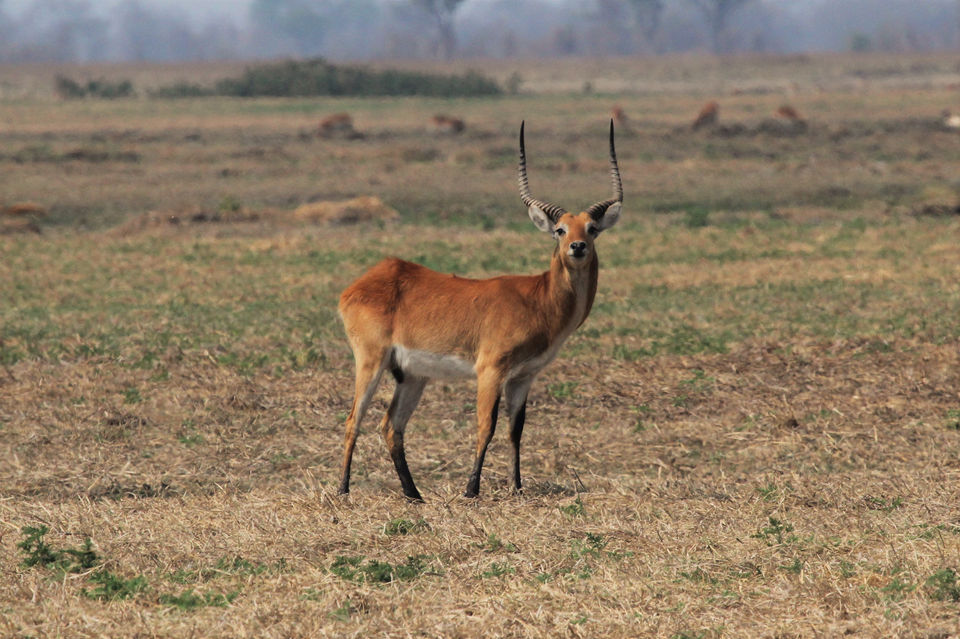
Ecology
Life in the Kasonso Busanga GMA
The Kasonso Busanga GMA is located within the Mufumbwe and Kasempa districts of North Western Province of Zambia, within Chief Mushima Mubambe’s Chiefdom. The GMA lies between latitude 13 38˚S to 14 45˚S and longitude 24 55˚E to 26 40˚E. It forms the North-Western most buffer to Kafue National Park. The Kasonso-Busanga GMA experiences typical sub-tropical climatic conditions with three distinct climatic seasons; rainy season (November to April), cool-dry season (May–August), and hot-dry season (September-October). Monthly maximum temperatures range between 25.0˚ C and 33.5˚ C, and the annual average temperature is 27.8˚ C. Monthly minimum temperatures range between 6.1˚ C and 17.9˚ C. The GMA lies within an elevation ranging between 1100 to 1700 meters above sea level.
Birds
Kasonso is likely home to around 500 bird species, the same number that has been recorded in Kafue National Park. We protect numerous pairs and nesting sites of wattled cranes and crowned cranes in our area of the Busanga Swamps as well as along the Lushimba and Mufumbwe floodplains. African ground hornbills occur in flocks of around 4 to 8 individuals and are sighted through the GMA. African broad-bills, Schalow’s turaco and trumpeter hornbills inhabit the woodlands and thicket habitats whilst marabou storks nest in the tall trees as well. African fish eagles and African jacanas are abundant along the rivers, which are also home to African finfoot and rufous-bellied herons. Böhm’s bee-eaters and white-fronted bee-eaters nest in the banks along the Lushimba River. The Busanga Swamps are home to many raptors, such as martial eagle, African marsh harrier and western banded snake eagle. A crane survey took place during the dry season in October 2017 by the Endangered Wildlife Trust's African Crane Conservation Programme (EWT's ACCP) and BirdWatch Zambia supported by DNPW, resulting in a count of 86 wattled cranes and 19 grey crowned cranes, with breeding pairs among each species, in the Busanga and Mufumbwe floodplains. This suggests that Kasonso protects a habitat suitable for breeding cranes and supports them during the dry season. We plan to conduct a survey during the wet season in 2018.
Mammals
There are around 158 mammal species that have been recorded in the neighboring Kafue National Park and we believe the majority of these are also present in the Kasonso Busanga GMA. The Busanga Plains are home to high concentrations of red lechwe, puku, blue wildebeest, sitatunga, warthog, oribi, elephant and buffalo whereas the fringing miombo and scattered woodland forms ideal habitats for antelope such as sable, roan, Liechtenstein’s hartebeest, greater kudu and Defassa waterbuck. The thickets are vital for shy antelope species such as bushbuck, blue duiker, Sharpe’s grysbok and the unusual yellow-backed duiker. Lions, leopards, cheetah and wild dog are also sighted regularly in the GMA. The elusive small mammal species found in the GMA include pangolin, honey badger, Egyptian mongoose, marsh mongoose and bushpig. Impala, oribi, reedbuck, side-striped jackal, warthog and yellow baboon are common species seen in the open plains. Species currently recovering include eland and zebra. In 2017, Ntengu Safaris sponsored 4 satellite predator tracking collars to the Zambian Carnivore Programme (ZCP). One collar has been deployed on a wild dog, the alpha male of a pack that moves between Kasonso and Kafue, whilst the other 3 will be deployed on lions in 2018.
Rivers
The Kasonso Busanga plays host to a number of small river systems, found throughout the entire GMA. The largest river in the GMA is the Lufupa, which flows into the Kafue River. The Lufupa together with its associated streams are responsible for the flooding of the papyrus-dominated wetland, the Busanga Swamps, which then gives way to the floodplain known as the Busanga Plains. The GMA is also dotted with several grassy plains (dambos) that are usually associated with the high-water table and found along streams.
Flora
The Kasonso Busanga GMA encompasses a wide variety of ecosystem types such as termitaria woodlands, rivers, large grassy plains, miombo woodlands and thickets, as well as a large part of the Busanga Swamps which was declared a Wetland of International Importance by Ramsar.
























